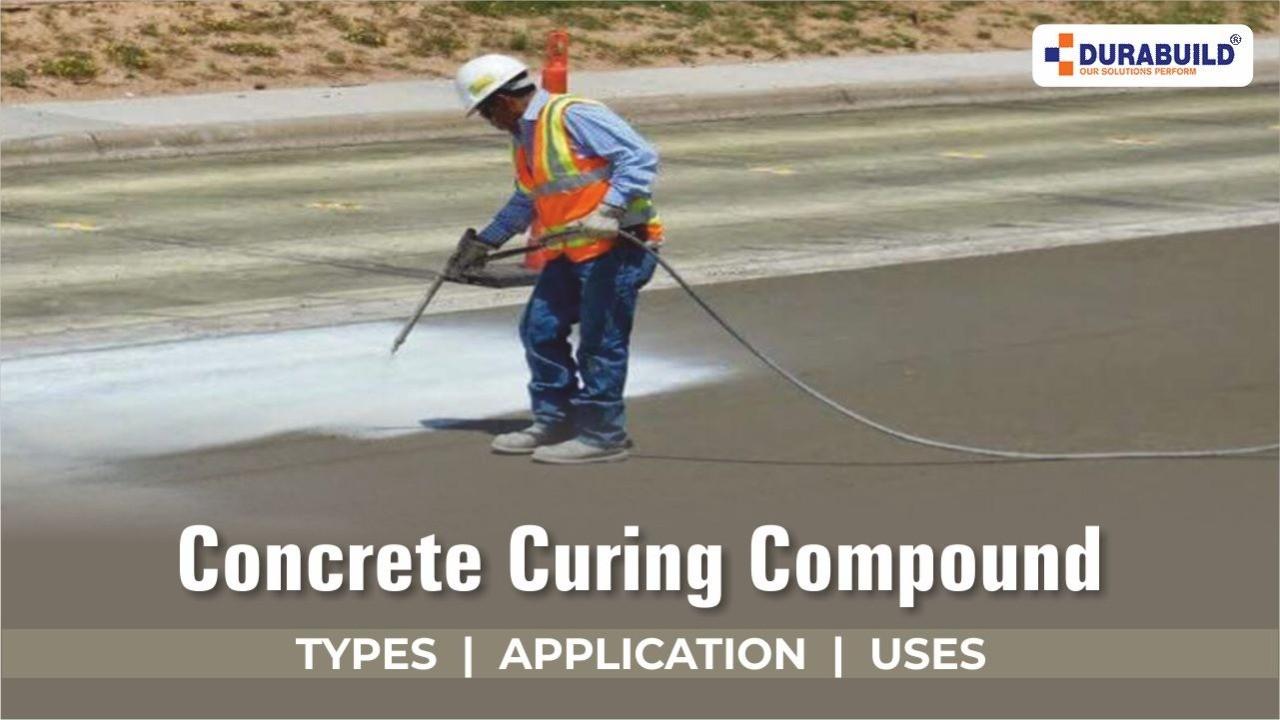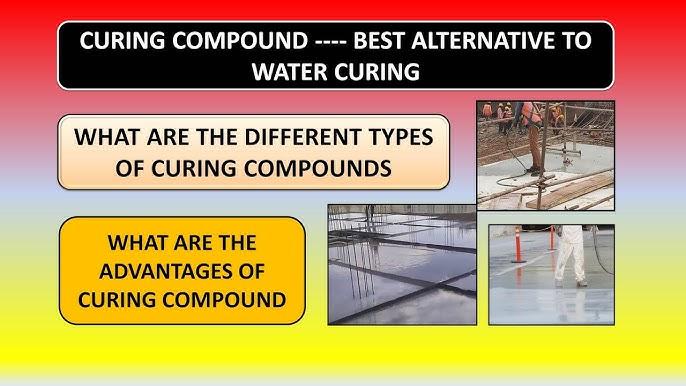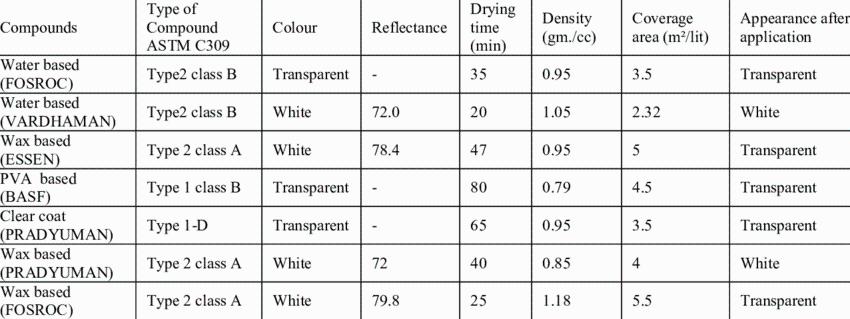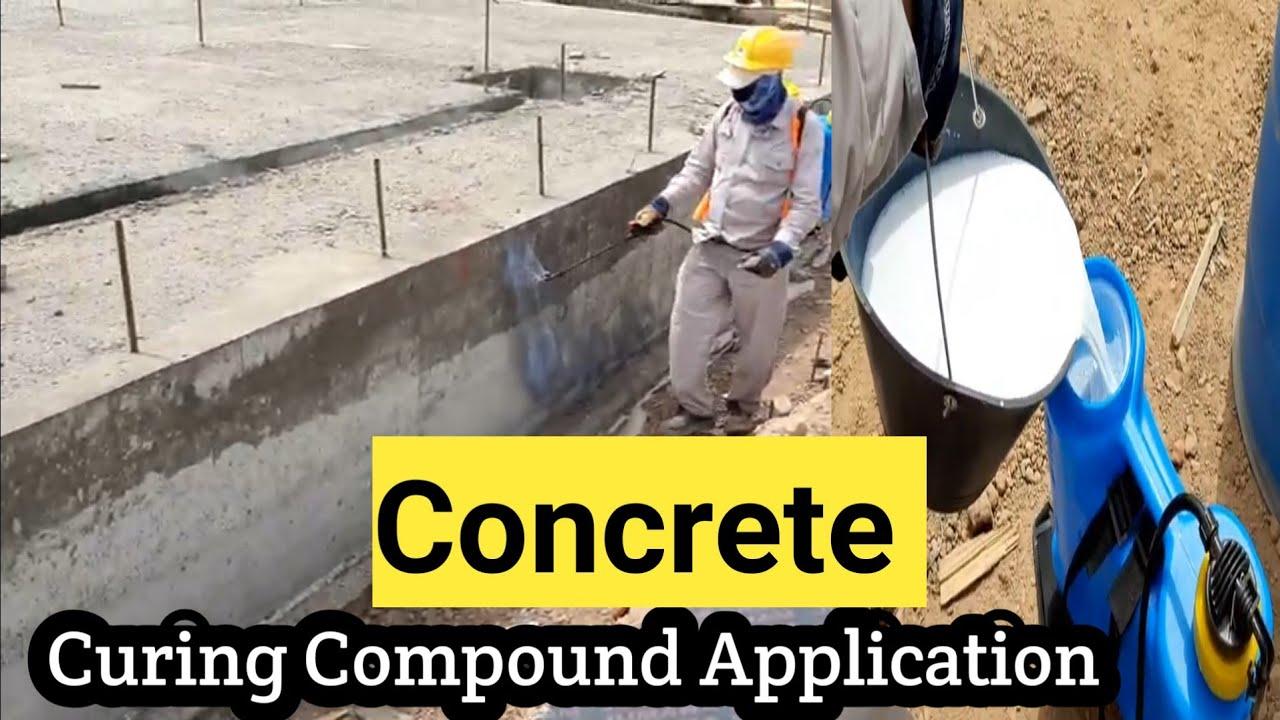



Table of Contents
- Introduction to Curing Compounds
- Importance of Concrete Curing
- Types of Curing Compounds
- Properties of Curing Compounds
- Application Methods
- Benefits of Using Curing Compounds
- Factors Influencing the Choice of Curing Compounds
- Environmental and Safety Considerations
- Common Challenges and Solutions
- Conclusion
- Faq's
Introduction to Curing Compounds
Curing compounds are liquid substances applied to freshly placed concrete surfaces to form a protective film that minimizes water evaporation. This film ensures that adequate moisture remains within the concrete, facilitating proper hydration of the cement particles. Proper hydration is crucial for the development of the concrete's intended mechanical properties and overall durability.
Importance of Concrete Curing
 Concrete Curing Compound, LinkedIn
Concrete Curing Compound, LinkedIn
Concrete curing is a vital process that significantly impacts the performance and longevity of concrete structures. Without adequate curing, concrete can suffer from:
Reduced Strength
Concrete gains strength through the hydration process, where cement particles react with water to form a hardened matrix. If adequate moisture is not maintained, this reaction can slow down or even stop prematurely, leading to incomplete hydration. As a result, the concrete does not achieve its intended compressive and tensile strength, making it weaker and more susceptible to structural failure under loads. Proper curing ensures continuous hydration, allowing the concrete to reach its full strength potential over time.
Increased Cracking
One of the most common issues caused by inadequate curing is shrinkage cracking. When fresh concrete loses moisture too quickly due to evaporation, internal stresses develop, leading to cracks on the surface. These cracks not only affect the appearance of the concrete but also compromise its structural integrity by allowing water and other harmful substances to penetrate. Proper curing, particularly through the use of curing compounds, helps retain moisture and control the rate of evaporation, minimizing shrinkage and reducing the risk of cracking.
Surface Dusting
If concrete is not properly cured, a weak and powdery surface layer can develop due to insufficient hydration. This phenomenon, known as surface dusting, occurs when the cement paste does not gain enough strength, leading to fine particles detaching from the surface under traffic or wear. This can be especially problematic in high-traffic areas such as industrial floors and pavements. Curing compounds help create a sealed surface that locks in moisture, allowing the concrete to develop a strong, durable outer layer that resists dusting and abrasion.
Decreased Durability
Concrete durability is heavily influenced by its resistance to environmental factors such as freeze-thaw cycles, chemical exposure, and abrasion. When curing is inadequate, the concrete remains porous and weak, making it more susceptible to deterioration over time. Water ingress, for example, can lead to corrosion of reinforcement bars, while poor hydration may result in lower resistance to temperature fluctuations. By using effective curing techniques, including membrane-forming curing compounds, the concrete retains its designed properties, ensuring long-term durability and reducing maintenance costs.
By using curing compounds, these issues can be mitigated, ensuring that the concrete achieves its designed performance characteristics.
Also Read: Retaining Walls: A Complete Guide to Design, Construction, and Costs
Types of Curing Compounds
Curing compounds are categorized based on their composition and the mechanism by which they retain moisture. The primary types include:
 Types of Curing Compounds, Youtube
Types of Curing Compounds, Youtube
- Membrane-Forming Compounds: These create a continuous film on the concrete surface, effectively sealing in moisture. They are further subdivided into:
- Resin-Based Compounds: Formulated from natural or synthetic resins, these compounds are effective in retaining moisture and are often used when subsequent layers, such as paints or coatings, are to be applied.
- Wax-Based Compounds: These are cost-effective and provide good moisture retention. However, they can leave a waxy residue that may interfere with the adhesion of subsequent treatments.
- Acrylic-Based Compounds: Acrylic curing compounds form a clear, hard film that provides excellent moisture retention and can also enhance the appearance of the concrete surface.
- Non-Membrane-Forming Compounds: These compounds penetrate the concrete surface and react chemically to reduce moisture loss. They are particularly useful when a breathable surface is desired or when subsequent treatments are planned.
Properties of Curing Compounds
 Properties of Curing Compounds, ResearchGate
Properties of Curing Compounds, ResearchGate
When selecting a curing compound, it's essential to consider the following properties:
- Moisture Retention: The primary function of a curing compound is to retain moisture within the concrete. The effectiveness of moisture retention is often evaluated using standardized tests, such as ASTM C156.
- Drying Time: The time it takes for the curing compound to form an effective film is crucial, especially in environments where rapid evaporation is a concern.
- Film Integrity: The film formed should be continuous and free from defects to ensure uniform curing.
- Compatibility: The curing compound should be compatible with any subsequent surface treatments, such as sealers, adhesives, or coatings.
- Reflectivity: In hot climates, compounds with reflective properties can help reduce the concrete's surface temperature, minimizing thermal stresses.
Also Read: ACP Sheets in Construction: Exploring Types, Features, and the Best Applications
Application Methods
 Curing Compound Application, Youtube
Curing Compound Application, Youtube
Proper application of curing compounds is vital to achieve the desired results. The common methods include:
- Spraying: Using low-pressure sprayers ensures an even and uniform application. This method is efficient for large surface areas.
- Rolling: Rollers can be used for smaller areas or when spraying is not feasible. It's essential to ensure that the application is uniform to prevent uneven curing.
- Brushing: For intricate areas or vertical surfaces, brushes can be employed to apply the compound effectively.
Application Tips:
- Timing: Apply the curing compound immediately after the disappearance of the concrete's surface sheen to prevent premature moisture loss.
- Coverage Rate: Follow the manufacturer's recommendations regarding coverage rates to ensure adequate film thickness.
- Environmental Conditions: Be mindful of wind, temperature, and humidity, as these factors can influence the curing process and the effectiveness of the compound.
Benefits of Using Curing Compounds
The advantages of employing curing compounds in concrete construction are manifold:
- Enhanced Strength Development: By retaining moisture, curing compounds facilitate complete hydration, leading to higher strength gains.
- Improved Durability: Proper curing reduces the permeability of concrete, making it more resistant to aggressive environmental conditions.
- Minimized Cracking: Controlled moisture loss helps in reducing plastic shrinkage cracks, ensuring structural integrity.
- Cost-Effective: Curing compounds offer a practical solution, especially in situations where traditional water curing methods are challenging or impractical.
Also Read: CLC Bricks: Lightweight, Durable, and Sustainable
Factors Influencing the Choice of Curing Compounds
Selecting the appropriate curing compound depends on various factors:
Type of Construction
The selection of a curing compound largely depends on the type of structure being built, as different projects have varying requirements. For instance, bridge decks and highways are exposed to extreme weather conditions and heavy loads, necessitating the use of curing compounds with high reflectivity to minimize thermal stresses and prevent early-age cracking. On the other hand, industrial floors and residential slabs may require curing compounds that allow for subsequent surface treatments, such as sealers or coatings. Understanding the specific demands of the structure ensures that the curing compound chosen enhances performance and longevity.
Environmental Conditions
Climate and environmental factors play a crucial role in determining the effectiveness of a curing compound. In hot and arid regions, where evaporation rates are high, it is essential to use curing compounds with superior moisture retention capabilities to prevent rapid drying and shrinkage cracks. Conversely, in colder climates or areas with high humidity, the choice of curing compound must ensure that excess moisture does not lead to prolonged curing times or surface defects. Additionally, in regions prone to heavy rainfall, selecting a curing compound that is water-resistant and capable of withstanding early exposure to moisture is critical.
Subsequent Treatments
When concrete surfaces require additional treatments, such as paints, sealers, or adhesives, it is vital to select a curing compound that does not interfere with their adhesion. Wax-based curing compounds, while effective in moisture retention, often leave a residual film that can hinder the bonding of coatings and finishes. In contrast, resin-based curing compounds tend to break down over time or can be easily removed, making them a more suitable option for projects that require further surface modifications. Properly assessing the need for subsequent treatments ensures compatibility and prevents costly rework or surface preparation efforts.
Environmental and Safety Considerations
When selecting and applying curing compounds, it's essential to consider environmental and safety factors:
- Volatile Organic Compounds (VOCs): Some curing compounds emit VOCs, which can contribute to air pollution and pose health risks. Opting for low-VOC or VOC-free products can mitigate these concerns.
- Worker Safety: Ensure that workers use appropriate personal protective equipment (PPE) during application to prevent skin and eye contact, as some compounds can be irritants.
- Environmental Impact: Consider the ecological effects of the curing compound, especially if used near water bodies. Biodegradable or environmentally friendly options are preferable in sensitive areas.
Common Challenges and Solutions
While curing compounds offer numerous benefits, challenges can arise:
- Uneven Application: Inconsistent application can lead to differential curing, resulting in surface discoloration or variable strength. Solution: Use proper equipment and techniques to ensure uniform coverage.
- Residue Interference: Some compounds leave residues that can affect the adhesion of subsequent treatments. Solution: Select compatible compounds and follow manufacturer guidelines for surface preparation before additional applications.
- Weather Conditions: Adverse weather, such as rain or extreme temperatures, can impact the effectiveness of curing compounds. Solution: Monitor weather forecasts and plan applications during favorable conditions; use protective measures like enclosures or tarps if necessary.
Also Read: Development Length in Construction: Key Principles and Practical Applications
Conclusion
Curing compounds play a pivotal role in concrete construction, ensuring that structures achieve their intended strength and durability by retaining essential moisture during the curing process. By understanding the various types of curing compounds, their properties, application methods, and the factors influencing their selection, construction professionals can make informed decisions to optimize concrete performance. Considering environmental and safety aspects further ensures that the chosen curing methods align with sustainable and safe construction practices.
explore further
Latest from Editorials
More from Publications
Resources
Dwello, for every home buyer, is a way to go from 'I feel' to 'I know', at no extra cost.




